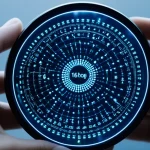Key Technological Advances Shaping UK Women’s Fashion
Technology has become a powerful force behind UK women’s fashion trends, transforming how consumers discover and engage with style. The rise of e-commerce platforms offers unprecedented convenience, enabling shoppers to browse vast collections anytime, anywhere. This shift not only broadens access to fashion brands but also fosters personalized shopping experiences through AI-driven recommendations and virtual fitting rooms.
Social media plays a pivotal role in trendsetting, with platforms like Instagram and TikTok influencing buying decisions in real time. Influencers and brands alike use these channels to showcase the latest styles, accelerating the diffusion of new looks across demographics and regions. This dynamic ecosystem makes fashion discovery more interactive and immediate than ever before.
In parallel : What Are the Latest Trends in UK Women’s Fashion for Summer 2023?
Another significant advance lies in wearable technology and smart fabrics that blend form and function. UK designers are increasingly incorporating textiles with embedded sensors, temperature regulation, or adaptive features, responding to lifestyle demands. These innovations herald a future where clothing enhances comfort and utility while staying stylish.
Together, these developments illustrate how modern technology is not merely a tool but a catalyst revolutionizing UK women’s fashion trends.
In the same genre : How Can UK Women’s Fashion Evolve in a Sustainable Future?
Notable UK Brands and Designers Embracing Technology
In the UK fashion scene, several UK fashion brands stand out for their enthusiastic adoption of technology, blending creativity with innovation. Brands like Burberry and Alexander McQueen have integrated digital tools seamlessly into their design and marketing processes. Burberry’s embrace of augmented reality and live streaming for fashion shows exemplifies how tech adoption in fashion elevates consumer engagement.
Beyond established names, innovative designers are pioneering smart textiles, incorporating materials that respond to environmental stimuli or offer enhanced wearability. This tech adoption in fashion is redefining the very fabric of clothing, literally and figuratively. Designers such as Anya Hindmarch are exploring LED textiles and interactive garments, pushing the boundaries of what fashion can express.
Case studies of tech-driven collections reveal practical and aesthetic advancements. For example, an independent UK fashion brand developed clothing featuring embedded sensors to monitor wearer health, showcasing the potential of smart textiles. These efforts demonstrate how UK fashion brands and innovative designers can harness technology not only for aesthetic impact but also for functional improvements, highlighting a promising future for tech adoption in fashion.
Changing Consumer Behaviours and Shopping Habits
Consumers today, especially UK women shoppers, demonstrate notable shifts in their fashion buying habits due to technological advances. The emergence of digital consumer behaviour has transformed the way purchases are made, with many opting for online platforms over traditional stores. As a result, retailers now face the challenge of catering to these evolved preferences effectively.
One key driver of this transformation is the influence of virtual fitting rooms and Augmented Reality (AR)-enhanced shopping experiences. These tools allow shoppers to visualize clothing on themselves virtually, reducing hesitation and increasing confidence in online purchases. This shift directly impacts fashion buying habits, as customers seek convenience combined with immersive experiences.
Furthermore, the rise of personalised recommendations powered by data analytics enables brands to tailor suggestions to individual tastes. This level of customisation encourages repeat visits and higher conversion rates among UK women shoppers, enhancing overall satisfaction.
The cumulative effect is a clear move away from conventional in-store shopping towards an online-first approach, shaped by technological innovation and evolving digital consumer behaviour patterns. Retailers embracing these changes stand to gain a competitive edge in today’s dynamic fashion market.
Technology’s Impact on Fashion Design and Production
Technology has revolutionised digital design processes, especially in UK women’s fashion production. Tools like computer-aided design (CAD) and 3D modelling empower designers to create detailed prototypes quickly and accurately. This speeds up the initial design phase while allowing easy adjustments before physical samples are made. For UK women’s fashion production, this means a more agile approach to evolving styles.
Sustainable fashion technology plays a crucial role in reducing environmental footprints. Innovations include bio-based fabrics and recycling technologies that are increasingly integrated into production. These advances ensure materials used in UK women’s fashion production contribute to long-term sustainability goals without compromising design quality.
Data-driven design trends are another key benefit of technology in fashion. Manufacturers and designers access real-time consumer insights to forecast market shifts more effectively. This rapid response allows them to tailor collections precisely to customer demand, reducing waste and improving inventory management. Embracing these technologies transforms UK women’s fashion production into a smarter, more efficient industry that aligns creativity with environmental responsibility.
Marketing and Trendsetting in a Digital Fashion Era
Digital fashion marketing has transformed the way trends spread, especially through social influencers. These influencers wield significant power, often shaping consumer preferences in real time. Their authentic content and large followings create organic buzz, making them key players in promoting UK fashion trends online. Brands now collaborate closely with influencers to craft campaigns that resonate deeply with audiences.
Real-time trend analytics play a crucial role in this strategy. By analyzing vast online data, marketers can identify emerging preferences and tailor their digital campaigns accordingly. This approach ensures marketing efforts are not only timely but also targeted, enhancing engagement and conversion rates.
Runway shows have also evolved. Traditional presentations have given way to immersive live streaming events. These broadcasts enable designers to reach global audiences instantly, breaking geographical barriers. The shift allows fashion houses to spotlight their latest collections dynamically, while providing consumers with interactive experiences. This digital innovation fosters immediate feedback and fuels swift trend adoption across social platforms.
Embracing these digital shifts is essential for anyone aiming to stay ahead in the competitive landscape of UK fashion trends online.
Recent Statistics and Expert Insights
Technology is reshaping UK women’s fashion at an unprecedented pace. Recent UK fashion statistics reveal that over 70% of women shoppers increasingly rely on digital tools to influence their buying decisions. Mobile apps, virtual try-ons, and AI-driven recommendations are becoming standard features in their shopping experience.
Industry experts emphasize that this transformation is not just about convenience but about creating a personalized fashion journey. According to leading analysts, technology’s impact on fashion trends is profound: consumers expect seamless integration of online and offline channels. Experts predict that upcoming innovations such as augmented reality (AR) fitting rooms and AI stylist assistants will further revolutionize the market.
Predictions for technology impact on UK women’s fashion look promising. Virtual wardrobes and smart clothing that track wear habits are close to mainstream adoption. This digital evolution empowers shoppers by offering tailored recommendations, reducing returns, and promoting sustainable choices. The industry trends point toward a future where technology and fashion blend to create smart, connected shopping experiences unlike anything before.
Understanding these dynamics is vital for UK women shoppers seeking to stay ahead. Embracing technology not only enhances style choices but also transforms how fashion trends evolve in the digital age.






